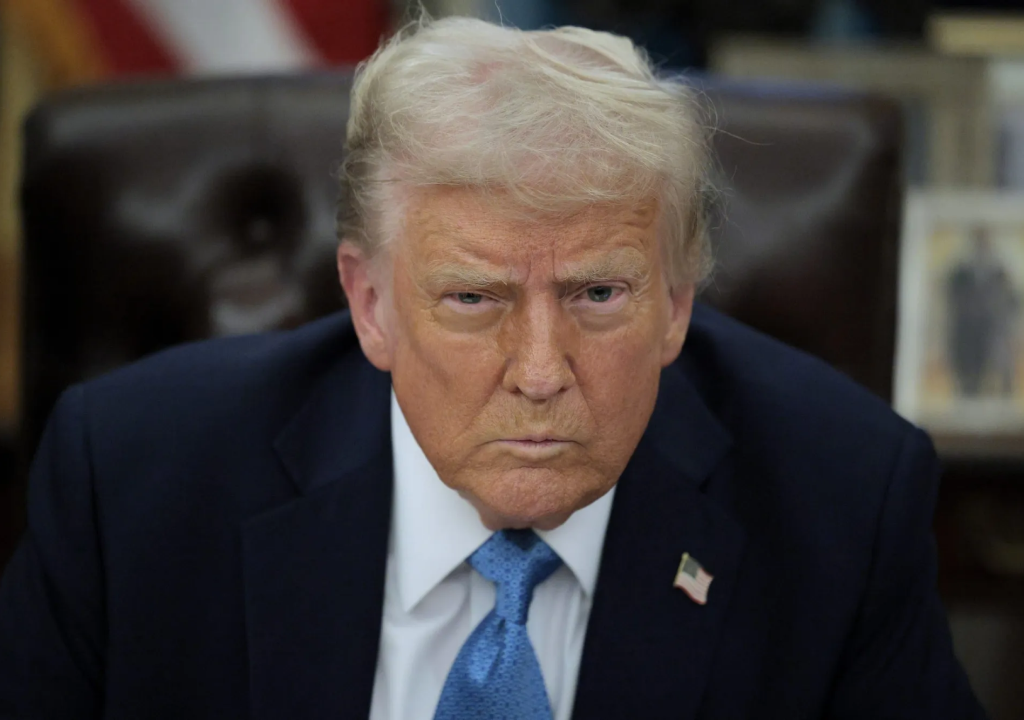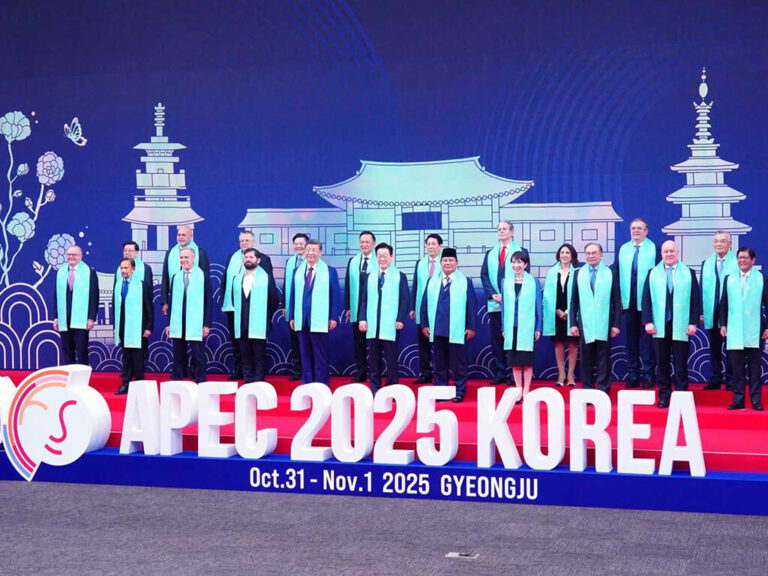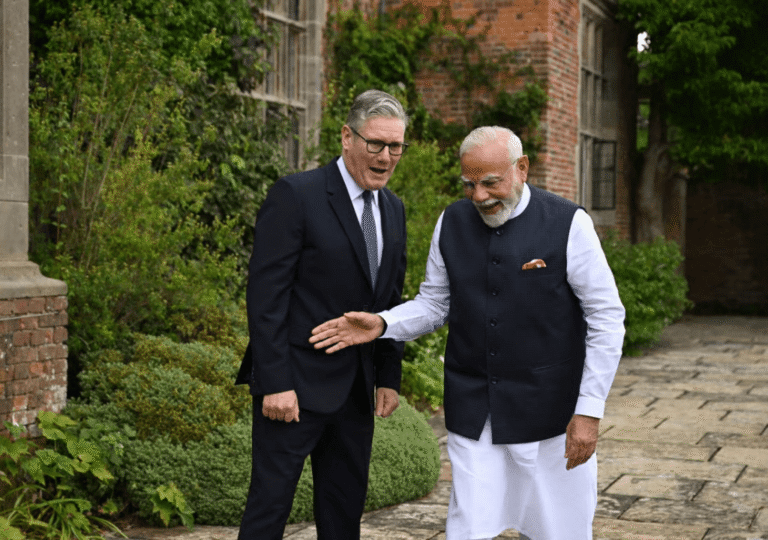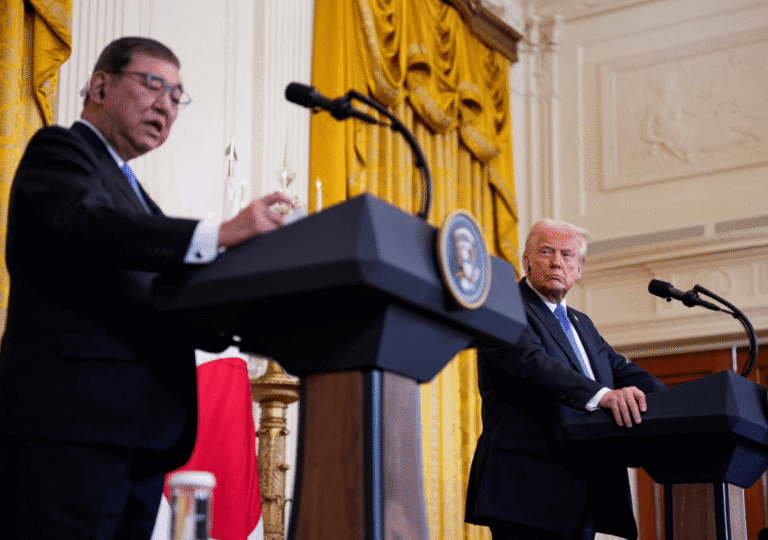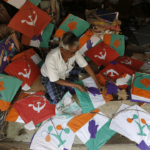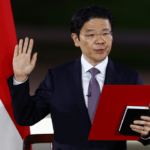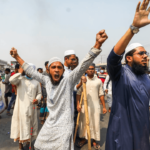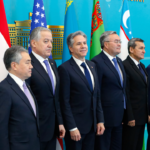Donald Trump and Narendra Modi have been carefully cultivating a political kinship that extends beyond diplomacy into mutual admiration. They showcased their relationship through grand public displays, from campaign-style rallies to meticulously choreographed photo-ops, projecting the ease of old friends. In a distinction typically reserved for America’s closest allies, Modi became only the fourth world leader to visit Trump early in his term—a visit that underscored not just strategic ties but a personal affinity.
Yet, despite the warmth of their exchanges, India remains vulnerable to Trump’s economic nationalism. As he upended trade relations with U.S. allies, India found itself in a particularly precarious position. Its sizable trade surplus and rigid barriers to foreign businesses made it an obvious target for Trump’s protectionist agenda. He did not see India as an indispensable partner but as a market resisting American goods—a problem to fix, a prize to claim.
At their joint press conference in Washington on Thursday evening, Trump and Modi once again projected a united front, their camaraderie intact despite the growing complexities of their relationship. The two staunch nationalists exchanged pleasantries, reinforcing a sense of mutual understanding even as unresolved tensions loomed—from tariff disputes to the deportation of undocumented migrants and the broader uncertainties of global trade.
Speculation about the future of their partnership ran high, yet their personal chemistry remained undeniable—a dynamic that had long shaped their public engagements. Still, Modi understands that personal rapport has its limits. America First was never designed to align seamlessly with India’s interests—and never will.
Just hours before Modi’s meeting with Trump at the White House, the U.S. president signed an executive order on reciprocal tariffs, aiming to match the duties imposed on American exports with equivalent levies on foreign imports. A fact sheet released by the White House singled out India, highlighting the disparity: while the U.S. applies an average Most Favored Nation (MFN) tariff of 5% on agricultural goods, India’s stands at 39%. The document also noted that India imposes a 100% tariff on American motorcycles, whereas the U.S. levies only 2.4% on Indian bikes.
India, taking the concern seriously, had already begun making concessions. Just a week prior, it reduced import tariffs on heavyweight motorcycles from 50% to 30%, with further tax cuts following. But the Trump administration remained unsatisfied. The announcement of reciprocal tariffs, timed to coincide with Modi’s visit, underscored the pressure on India to strike a delicate balance—protecting domestic industries while preserving its crucial access to the American market.
For Modi, this balancing act carries political risks, especially as India grapples with an economic slowdown. The U.S. push for greater market access primarily targets consumer goods, a sector where entrenched protections have long shielded Indian small and medium enterprises. These businesses form a significant part of Modi’s voter base, making any concessions a potential political liability.
India is banking on large-scale purchases of American oil, gas, and defense equipment—including the coveted F-35 stealth jets—to soften Trump’s frustration over their trade relationship. Rather than challenging U.S. tariffs directly, Modi’s government has chosen a different approach: addressing Trump’s fixation on trade deficits. By ramping up imports from the U.S., India signals its willingness to spend, allowing Trump to claim victory in narrowing the $45.6 billion trade gap while boosting American exports.
But trade was not the only pressing issue. Trump’s aggressive crackdown on undocumented migration has also affected Indians, making it another focal point of Modi’s visit. An estimated 725,000 undocumented Indian immigrants live in the U.S., making them the third-largest group of unauthorized migrants after Mexicans and Salvadorans, according to Pew Research. Just days before Modi’s arrival, the U.S. deported 104 Indians on a military flight, a move that ignited outrage in India after footage showed deportees shackled and handcuffed. Many in India demanded that Modi push back against Trump’s hardline policies.
Instead, Modi aligned himself with Trump, stating unequivocally that anyone entering another country illegally has absolutely no right to stay—a stance that underscored his preference for pragmatism over confrontation.
Trump’s tariff war shows no signs of slowing, sparing neither allies nor adversaries. India stands among the most vulnerable, making Modi’s visit all the more critical. His government has already shown signs of bending to U.S. demands—accepting deported undocumented migrants on American military planes and negotiating energy, defense, and broader trade deals. With limited support from Russia or China, India faces a harsh reality: if Trump imposes tariffs on Indian goods, the consequences will be severe. More high-level meetings are inevitable as Modi works to defuse tensions and avoid an escalating trade war. But in these early days of Trump’s second term, the tone is already set.

